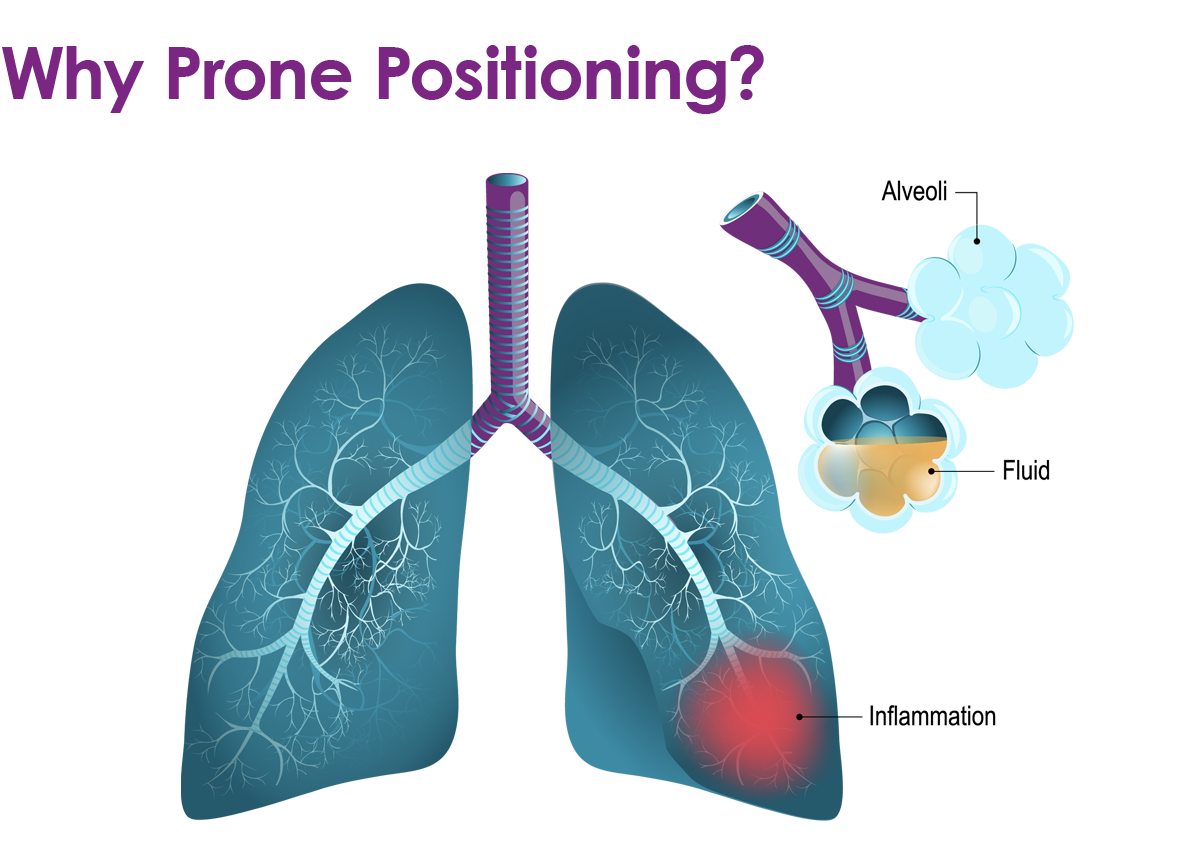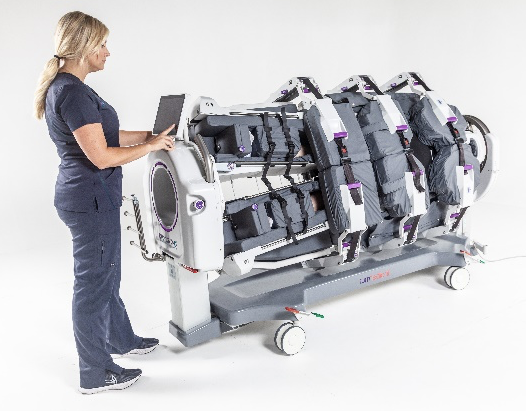
The prone position is a well-established intervention that improves oxygenation and decreases mortality for patients with respiratory failure and hypoxemia. Prone positioning has increased in use over recent years due to the vast amount of evidence and international recommendations for this intervention, most recently with COVID-19.1 There are several reasons why the prone position contributes to increases in oxygenation.
First, prone positioning creates a more homogenous distribution of ventilator pressures, reducing the risk for alveolar overdistension.2 This in turn reduces ventilator-induced lung injury.
Second, alveoli that were previously dependent, fluid-filled due to gravity, and/or collapsed are recruited and become able to exchange oxygen in the prone position. This often leads to an improvement in oxygenation and ultimately to a reduction in FiO2 requirements.2
The overall effect of prone positioning on oxygenation and ventilator requirements leads to a reduction in mortality. This has been consistently demonstrated through multiple studies, such as the PROSEVA trial, and presented in several subsequent meta-analyses.2,3,4,5

The Pronova-O2 Automated Prone Therapy System provides a safe and efficient method for positioning critically ill patients. For additional information on Pronova-O2, or to preorder, please visit turnmedical.com or call 1-855-275-8876.
Refer to Pronova-O2 Instructions for Use for full prescribing information including risks.
References
- Alhazzani, W., Møller, M.H., Arabi, Y.M. et al. Surviving Sepsis Campaign: Guidelines on the management of critically ill adults with Coronavirus Disease 2019 (COVID-19). Intensive Care Med (2020). https://doi.org/10.1007/s00134-020-06022-5
- Malhotra, Atul. (Sept 2021). Prone ventilation for adults with acute respiratory distress syndrome. Up to Date. Retrieved October 5, 2021, https://www.uptodate.com/contents/prone-ventilation-for-adult-patients-with-acute-respiratory-distress-syndrome#H5
- Beitler JR, Shaefi S, Montesi SB, et al. Prone positioning reduces mortality from acute respiratory distress syndrome in the low tidal volume era: A meta-analysis. Intensive Care Med. 2014;40(3):332-41, doi: 10.1007/s00134-013-3194-3.
- Henderson, W.R., Griesdale, D.E., Dominelli, Pl, & Ronco, J.J. (2014). Does prone positioning improve oxygenation and reduce mortality in patients with acute respiratory distress syndrome? Canadian Respiratory Journal, 21(4). 213-215, https://doi.org/10.155/2014/472136.
- Park SY, Kim HJ, Yoo KH, Park YB, Kim SW, Lee SJ, et al. The efficacy and safety of prone positioning in adult patients with acute respiratory distress syndrome: a meta‐analysis of randomized controlled trials. Journal of Thoracic Diseases 2015;7(3):356‐67. doi: 10.3978/j.issn.2072-1439.2014.12.49.






